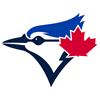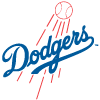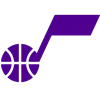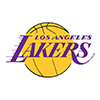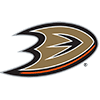While the baseball season is traditionally divided at the All-Star break into two unequal halves, the actual halfway point of the schedule occurs right about now. Technically, we're 48.9 percent of the way through the season as I sit down to write, and we'll be 49.5 percent of the way through by the time Wednesday's games end, but that's as close to the exact midpoint as we're going to get for a weekly column, so now is the time for a true first-half wrap-up.
I'll be using the same methodology this week as I used in my article which looked at the biggest risers and fallers of April, comparing each player's ADP rank across all 712 NFBC drafts in the month of March to his earned auction value thus far. Because earned auction value is built off result stats like wins and RBI rather than process stats like pitch usage or barrel rate, these lists will include a handful of players who have just had things break their way alongside the usual contingent of players whose values genuinely seem to be changing, but I'll focus primarily on the latter category where possible.
We'll go position group by position group, highlighting the players who've most diverged from their March ADP. Risers who are still outside the top 450 — and therefore still unrosterable in 15-team leagues — are excluded, as are fallers who began outside that range. For the fallers, I've ranked players by raw spots dropped, but I've left
While the baseball season is traditionally divided at the All-Star break into two unequal halves, the actual halfway point of the schedule occurs right about now. Technically, we're 48.9 percent of the way through the season as I sit down to write, and we'll be 49.5 percent of the way through by the time Wednesday's games end, but that's as close to the exact midpoint as we're going to get for a weekly column, so now is the time for a true first-half wrap-up.
I'll be using the same methodology this week as I used in my article which looked at the biggest risers and fallers of April, comparing each player's ADP rank across all 712 NFBC drafts in the month of March to his earned auction value thus far. Because earned auction value is built off result stats like wins and RBI rather than process stats like pitch usage or barrel rate, these lists will include a handful of players who have just had things break their way alongside the usual contingent of players whose values genuinely seem to be changing, but I'll focus primarily on the latter category where possible.
We'll go position group by position group, highlighting the players who've most diverged from their March ADP. Risers who are still outside the top 450 — and therefore still unrosterable in 15-team leagues — are excluded, as are fallers who began outside that range. For the fallers, I've ranked players by raw spots dropped, but I've left out players who have missed at least half the season due to injury, as it's not particularly informative to tell you that players don't provide fantasy value while hurt. (Players who were demoted remain fair game.) For the risers, I've ranked players by their percentage of possible spots gained rather than by the raw number of spots they jumped, on the theory that someone who rises from 100th to 10th has accomplished something much more impressive than someone who rises from 500th to 410th.
Risers
Starting Pitchers
| Player | Team | ADP Rank | Earned Value Rank | % of Possible Gain |
|---|---|---|---|---|
| Nathan Eovaldi | TEX | 230 | 11 | 95.6% |
| Marcus Stroman | CHC | 257 | 24 | 91.0% |
| Tyler Wells | BAL | 550 | 54 | 90.3% |
| Joe Ryan | MIN | 132 | 16 | 88.5% |
| Bryce Elder | ATL | 630 | 85 | 86.6% |
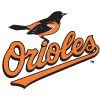 Tyler Wells, Orioles: Wells' season so far exemplifies why I like to run these results-based articles a few times per year. Not everything about his success has been sustainable, as his .193 BABIP and 85.1 percent strand rate both indicate a good amount of regression is coming, but he's made enough legitimate changes to his profile that his draft-day price looks like a typo. He converted back to starting last year after missing two seasons due to Tommy John surgery and debuting as a reliever in 2021. Grading on a curve, his 4.25 ERA in 23 starts was perfectly fine, but he struck out just 18.0 percent of opposing batters and averaged just 4.5 innings per start. This year, he's all the way up to 5.8 innings per start, and his stuff hasn't suffered, as his strikeout rate has jumped to 26.5 percent. Only one qualified starter (Joe Ryan) can beat both that mark and Wells' 5.6 percent walk rate, a combination which has led Wells to a 3.21 ERA. Don't be fooled by the BABIP and strand rate and assume that his earned value ranking is entirely fluky, as he's shown enough to remain quite interesting even after his good luck evaporates.
Tyler Wells, Orioles: Wells' season so far exemplifies why I like to run these results-based articles a few times per year. Not everything about his success has been sustainable, as his .193 BABIP and 85.1 percent strand rate both indicate a good amount of regression is coming, but he's made enough legitimate changes to his profile that his draft-day price looks like a typo. He converted back to starting last year after missing two seasons due to Tommy John surgery and debuting as a reliever in 2021. Grading on a curve, his 4.25 ERA in 23 starts was perfectly fine, but he struck out just 18.0 percent of opposing batters and averaged just 4.5 innings per start. This year, he's all the way up to 5.8 innings per start, and his stuff hasn't suffered, as his strikeout rate has jumped to 26.5 percent. Only one qualified starter (Joe Ryan) can beat both that mark and Wells' 5.6 percent walk rate, a combination which has led Wells to a 3.21 ERA. Don't be fooled by the BABIP and strand rate and assume that his earned value ranking is entirely fluky, as he's shown enough to remain quite interesting even after his good luck evaporates.
Relief Pitchers
| Player | Team | ADP Rank | Earned Value Rank | % of Possible Gain |
|---|---|---|---|---|
| Yennier Cano | BAL | 1,155* | 196 | 83.1% |
| Andrew Nardi | MIA | 1,155 | 210 | 81.9% |
| Josh Sborz | TEX | 1,110 | 260 | 76.6% |
| Michael Tonkin | ATL | 1,155 | 276 | 76.2% |
| Phil Maton | HOU | 1,095 | 263 | 76.1% |
Note: undrafted players were given an ADP Rank of 1,155 for the purposes of this column, as 1,154 players were drafted in NFBC leagues in March.
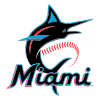 Andrew Nardi, Marlins: Cano was one of the stories of the early part of the season after beginning the year with a 25:0 K:BB in 17 straight scoreless appearances, but a 9:6 K:BB in 15 games since then means Nardi has nearly caught him on the earned value leaderboard. The 24-year-old lefty was a relief-only prospect who posted a 9.82 ERA and 2.66 WHIP in his 14.2-inning debut last year, so it's understandable that he was entirely off the radar during draft season. He's been very strong across the board this year, however, producing a 2.62 ERA and 1.05 WHIP in 34.1 frames, numbers he's backed up with a 32.1 percent strikeout rate and 7.3 percent walk rate. His simple repertoire (fastballs and sliders make up 97 percent of his pitches) has not just generated plenty of whiffs, it's also been very hard for hitters to square up. The 84.8 mph average exit velocity he's allowed is a 97th percentile mark, while his 28.0 percent hard-hit rate sits in the 94th percentile. So far, Nardi's success has only led to two saves, but he's positioned himself to compete for opportunities with Dylan Floro should the oft-injured A.J. Puk go down again. If that doesn't happen, though, Nardi's appeal will be limited to leagues which count holds, as much of his earned value thus far has come from his five wins, tied for second among all relievers.
Andrew Nardi, Marlins: Cano was one of the stories of the early part of the season after beginning the year with a 25:0 K:BB in 17 straight scoreless appearances, but a 9:6 K:BB in 15 games since then means Nardi has nearly caught him on the earned value leaderboard. The 24-year-old lefty was a relief-only prospect who posted a 9.82 ERA and 2.66 WHIP in his 14.2-inning debut last year, so it's understandable that he was entirely off the radar during draft season. He's been very strong across the board this year, however, producing a 2.62 ERA and 1.05 WHIP in 34.1 frames, numbers he's backed up with a 32.1 percent strikeout rate and 7.3 percent walk rate. His simple repertoire (fastballs and sliders make up 97 percent of his pitches) has not just generated plenty of whiffs, it's also been very hard for hitters to square up. The 84.8 mph average exit velocity he's allowed is a 97th percentile mark, while his 28.0 percent hard-hit rate sits in the 94th percentile. So far, Nardi's success has only led to two saves, but he's positioned himself to compete for opportunities with Dylan Floro should the oft-injured A.J. Puk go down again. If that doesn't happen, though, Nardi's appeal will be limited to leagues which count holds, as much of his earned value thus far has come from his five wins, tied for second among all relievers.
Catchers
| Player | Team | ADP Rank | Earned Value Rank | % of Possible Gain |
|---|---|---|---|---|
| Jonah Heim | TEX | 232 | 48 | 79.7% |
| Patrick Bailey | SFG | 1,155 | 422 | 63.5% |
| Elias Diaz | COL | 318 | 140 | 56.2% |
| Matt Thaiss | LAA | 782 | 379 | 51.6% |
| Connor Wong | BOS | 696 | 394 | 43.5% |
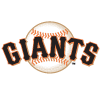 Patrick Bailey, Giants: Bailey's placement on this list is impressive given that he didn't make his season debut until mid-May. Selected 13th-overall in the 2020 draft, Bailey has been stuck behind 2018 second-overall pick Joey Bart on the organizational depth chart for his whole career and had yet to play above High-A prior to this season, but he's shown enough in his first six weeks in the big leagues that he's already leapfrogged his teammate, who's been stuck in the minors since returning from a groin injury in mid-June. Bailey, a switch-hitter, has slashed .320/.349/.534 through 30 games, and while a .403 BABIP suggests that's nowhere close to sustainable, his .321 xBA indicates he's earned his strong numbers thus far. Bailey's plate discipline is a worry, as his 25.2 percent strikeout rate is bad and his 3.6 percent walk rate is worse, but he's hit the ball hard when he's made contact, posting a 12.8 percent barrel rate and 44.9 percent hard-hit rate. Expect regression to hit his batting average soon unless he suddenly cuts his strikeout rate, but he's opened up enough of a gap on Bart and his .223/.293/.342 career slash line that there's little reason to doubt Bailey will remain the guy behind the plate even when a slump arrives.
Patrick Bailey, Giants: Bailey's placement on this list is impressive given that he didn't make his season debut until mid-May. Selected 13th-overall in the 2020 draft, Bailey has been stuck behind 2018 second-overall pick Joey Bart on the organizational depth chart for his whole career and had yet to play above High-A prior to this season, but he's shown enough in his first six weeks in the big leagues that he's already leapfrogged his teammate, who's been stuck in the minors since returning from a groin injury in mid-June. Bailey, a switch-hitter, has slashed .320/.349/.534 through 30 games, and while a .403 BABIP suggests that's nowhere close to sustainable, his .321 xBA indicates he's earned his strong numbers thus far. Bailey's plate discipline is a worry, as his 25.2 percent strikeout rate is bad and his 3.6 percent walk rate is worse, but he's hit the ball hard when he's made contact, posting a 12.8 percent barrel rate and 44.9 percent hard-hit rate. Expect regression to hit his batting average soon unless he suddenly cuts his strikeout rate, but he's opened up enough of a gap on Bart and his .223/.293/.342 career slash line that there's little reason to doubt Bailey will remain the guy behind the plate even when a slump arrives.
Corner Infielders
| Player | Team | Pos | ADP Rank | Earned Value Rank | % of Possible Gain |
|---|---|---|---|---|---|
| Spencer Steer | CIN | 1B/3B | 376 | 38 | 90.1% |
| Luke Raley | TBR | 1B/OF | 722 | 99 | 86.4% |
| Matt Olson | ATL | 1B | 36 | 6 | 85.7% |
| Ezequiel Duran | TEX | SS/3B/OF | 653 | 122 | 81.4% |
| Yandy Diaz | TBR | 1B/3B | 266 | 53 | 80.4% |
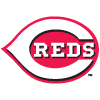 Spencer Steer, Reds: Elly De La Cruz gets the majority of the hype, and fellow 2023 debutants Andrew Abbott and Matt McLain have earned their fair share as well, but let's not forget Steer's role in the Reds' return to relevancy. Steer didn't show much in his 28-game debut, slashing .211/.306/.326, but he's taken off in his first full season and become an all-around contributor. Through 77 games, he's hitting .279/.367/.488 with 12 homers and eight steals. His Statcast data indicates his quality of contact has been middling, as he owns a 35th percentile barrel rate and a 47th percentile hard hit rate, but his 65th percentile max exit velocity implies room for growth. Even his current contact quality has been enough to make him a productive hitter, however, thanks in large part to his 10.7 percent walk rate and 18.3 percent strikeout rate, both of which comfortably beat league average. He's developed enough as a hitter that the Reds have held off on promoting Christian Encarnacion-Strand, though the fact that Steer has also begun seeing time in left field should help keep him in the lineup even if Encarnacion-Strand forces his way into the picture.
Spencer Steer, Reds: Elly De La Cruz gets the majority of the hype, and fellow 2023 debutants Andrew Abbott and Matt McLain have earned their fair share as well, but let's not forget Steer's role in the Reds' return to relevancy. Steer didn't show much in his 28-game debut, slashing .211/.306/.326, but he's taken off in his first full season and become an all-around contributor. Through 77 games, he's hitting .279/.367/.488 with 12 homers and eight steals. His Statcast data indicates his quality of contact has been middling, as he owns a 35th percentile barrel rate and a 47th percentile hard hit rate, but his 65th percentile max exit velocity implies room for growth. Even his current contact quality has been enough to make him a productive hitter, however, thanks in large part to his 10.7 percent walk rate and 18.3 percent strikeout rate, both of which comfortably beat league average. He's developed enough as a hitter that the Reds have held off on promoting Christian Encarnacion-Strand, though the fact that Steer has also begun seeing time in left field should help keep him in the lineup even if Encarnacion-Strand forces his way into the picture.
Middle Infielders
| Player | Team | Pos | ADP Rank | Earned Value Rank | % of Possible Gain |
|---|---|---|---|---|---|
| Ketel Marte | ARI | 2B | 192 | 15 | 92.7% |
| Wander Franco | TBR | SS | 78 | 10 | 88.3% |
| Geraldo Perdomo | ARI | 2B/SS | 769 | 114 | 85.3% |
| Jonathan India | CIN | 2B | 167 | 31 | 81.9% |
| Ezequiel Duran | TEX | SS/3B/OF | 653 | 122 | 81.4% |
 Ketel Marte, Diamondbacks: As with Steer above, Marte plays alongside a dynamic rookie (Corbin Carroll in this case) who's received much of the praise as his team makes the leap to playoff contention, but he deserves plenty of plaudits himself. Marte's draft-day price reflected a rather bland 2022 campaign which saw him hit .240 with 12 homers and five steals, a level which wasn't entirely new for him. Marte's wRC+ each season from 2018 through 2022 is the picture of inconsistency:
Ketel Marte, Diamondbacks: As with Steer above, Marte plays alongside a dynamic rookie (Corbin Carroll in this case) who's received much of the praise as his team makes the leap to playoff contention, but he deserves plenty of plaudits himself. Marte's draft-day price reflected a rather bland 2022 campaign which saw him hit .240 with 12 homers and five steals, a level which wasn't entirely new for him. Marte's wRC+ each season from 2018 through 2022 is the picture of inconsistency:
| Year | wRC+ |
|---|---|
| 2018 | 105 |
| 2019 | 150 |
| 2020 | 94 |
| 2021 | 140 |
| 2022 | 102 |
If you avoided him because he'd been barely above-average at best in three of the past five seasons and had never managed more than 14 homers outside of the juiced-ball peak in 2019, I wouldn't have many qualms with your thought process, as it was the same as mine. If you bought in nonetheless, he's already given you 15 homers while slashing .295/.374/.526, good for a 142 wRC+. While we certainly don't see this level of play from him all the time, the fact that no part of his performance is entirely new makes it much easier to buy in. His 15.6 percent strikeout rate is quite strong but is right in line with his career 15.5 percent mark, and while his 10.1 percent barrel rate would be a career high, he finished at 8.9 percent in 2021 and 9.1 percent in 2019.
Outfielders
| Player | Team | Pos | ADP Rank | Earned Value Rank | % of Possible Gain |
|---|---|---|---|---|---|
| Corbin Carroll | ARI | OF | 49 | 3 | 95.8% |
| Lane Thomas | WAS | OF | 296 | 17 | 94.6% |
| Josh Lowe | TBR | OF | 427 | 27 | 93.9% |
| Adolis Garcia | TEX | OF | 53 | 5 | 92.3% |
| Esteury Ruiz | OAK | OF | 222 | 26 | 88.7% |
Note: Ronald Acuna Jr. was the top player in March drafts and is the top player today, so he either gained no ground or gained 100% of the possible ground, depending on how you want to spin it.
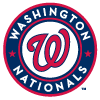 Lane Thomas, Nationals: Thomas was certainly not someone I expected to see hovering around the back of the first round in terms of earned value at this point in the year. He owned a 99 wRC+ for his career heading into this season and produced a nearly identical 97 wRC+ through May 14. Since then, he's caught fire, slashing .323/.364/.627 (good for a 163 wRC+) with 10 homers in 39 games. Unlike many of the names discussed previously in this article, however, I'm still holding onto a fair bit of skepticism about Thomas. His 26.0 percent strikeout rate and 5.7 percent walk rate are both poor (and both steps backwards from last season), and his line has been propped up by a .373 BABIP. His .257 xBA and .429 xSLG give an idea of what his numbers might look like once the good luck dies down. That said, even if I doubt the idea of Lane Thomas becoming a second-round fantasy pick, I'd buy that he has more fantasy value than drafters gave him credit for. In part, that's due to his 9.4 percent barrel rate, up meaningfully from his 6.5 percent mark last season. It's also due to the fact that he's firmly entrenched as Washington's leadoff hitter, a role which has helped him score 55 runs, tied for 10th in the league.
Lane Thomas, Nationals: Thomas was certainly not someone I expected to see hovering around the back of the first round in terms of earned value at this point in the year. He owned a 99 wRC+ for his career heading into this season and produced a nearly identical 97 wRC+ through May 14. Since then, he's caught fire, slashing .323/.364/.627 (good for a 163 wRC+) with 10 homers in 39 games. Unlike many of the names discussed previously in this article, however, I'm still holding onto a fair bit of skepticism about Thomas. His 26.0 percent strikeout rate and 5.7 percent walk rate are both poor (and both steps backwards from last season), and his line has been propped up by a .373 BABIP. His .257 xBA and .429 xSLG give an idea of what his numbers might look like once the good luck dies down. That said, even if I doubt the idea of Lane Thomas becoming a second-round fantasy pick, I'd buy that he has more fantasy value than drafters gave him credit for. In part, that's due to his 9.4 percent barrel rate, up meaningfully from his 6.5 percent mark last season. It's also due to the fact that he's firmly entrenched as Washington's leadoff hitter, a role which has helped him score 55 runs, tied for 10th in the league.
Fallers
Starting Pitchers
| Player | Team | ADP Rank | Earned Value Rank | Spots Dropped |
|---|---|---|---|---|
| Alek Manoah | TOR | 63 | 1,077 | 1,014 |
| Grayson Rodriguez | BAL | 195 | 1,052 | 857 |
| Jameson Taillon | CHC | 234 | 1,042 | 808 |
| Brady Singer | KCR | 189 | 986 | 797 |
| Noah Syndergaard | LAD | 282 | 1,062 | 780 |
 Jameson Taillon, Cubs: I wrote up Taillon after his final start in May, and things haven't gotten significantly better since then. That's not to say they haven't gotten better at all — he probably would have lost his roster spot like Manoah and Rodriguez did if he still had the same 8.04 ERA he had through the end of two months — but the pitcher he's been in June hasn't been nearly good enough. In five starts, he owns a 5.60 ERA, and his 6.15 FIP and 5.20 xFIP imply that's about what he deserves. On the season overall, if you're looking for optimism, you could point to the fact that Taillon's 7.7 percent walk rate is better than average, while his 20.3 percent strikeout rate isn't all that bad. Martin Perez and Jose Quintana finished within a point of both marks last season and wound up with ERAs of 2.89 and 2.93, respectively. The difference is that Perez and Quintana managed contact well, maintaining above-average groundball rates and allowing half a home run or less per nine innings. Taillon's groundball rate sits at 32.4 percent, and opposing hitters have managed an 11.8 percent barrel rate and 1.84 HR/9. He's never struck out batters at more than a 23.2 percent clip before, so if he can't start generating weak contact again soon, he's in trouble.
Jameson Taillon, Cubs: I wrote up Taillon after his final start in May, and things haven't gotten significantly better since then. That's not to say they haven't gotten better at all — he probably would have lost his roster spot like Manoah and Rodriguez did if he still had the same 8.04 ERA he had through the end of two months — but the pitcher he's been in June hasn't been nearly good enough. In five starts, he owns a 5.60 ERA, and his 6.15 FIP and 5.20 xFIP imply that's about what he deserves. On the season overall, if you're looking for optimism, you could point to the fact that Taillon's 7.7 percent walk rate is better than average, while his 20.3 percent strikeout rate isn't all that bad. Martin Perez and Jose Quintana finished within a point of both marks last season and wound up with ERAs of 2.89 and 2.93, respectively. The difference is that Perez and Quintana managed contact well, maintaining above-average groundball rates and allowing half a home run or less per nine innings. Taillon's groundball rate sits at 32.4 percent, and opposing hitters have managed an 11.8 percent barrel rate and 1.84 HR/9. He's never struck out batters at more than a 23.2 percent clip before, so if he can't start generating weak contact again soon, he's in trouble.
Relief Pitchers
| Player | Team | ADP Rank | Earned Value Rank | % of Possible Gain |
|---|---|---|---|---|
| Rafael Montero | HOU | 385 | 1,051 | 666 |
| Seranthony Dominguez | PHI | 283 | 732 | 449 |
| Jose Leclerc | TEX | 208 | 652 | 444 |
| Jimmy Herget | LAA | 351 | 789 | 438 |
| Michael Fulmer | CHC | 321 | 695 | 374 |
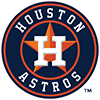 Rafael Montero, Astros: Montero was drafted as one of the more interesting setup men in deeper leagues over the winter, which made sense given that he'd posted a 2.37 ERA and saved 14 games last season and was rewarded with a three-year, $34.5 million deal to remain in Houston. The Astros' confidence in him has not been matched by his results, however. While he does have one save to his name, he's struggled to a 7.76 ERA and 1.82 WHIP in 31.1 innings. The result has been that he's no longer anywhere close to the top candidate to step into the ninth inning should Ryan Pressly's health fail him, with Hector Neris (1.14 ERA) and Bryan Abreu (2.75) easily ahead of him. It's not only those two who have surpassed Montero. Among the seven Astros who have made at least 10 relief appearances this season, Montero has been used in the lowest-leverage situations. To be fair to Montero, his 4.37 xFIP and 3.82 SIERA tell a much different story than his ERA, but regressing to those marks once his .416 BABIP falls back to earth would still leave him far from a ninth-inning job.
Rafael Montero, Astros: Montero was drafted as one of the more interesting setup men in deeper leagues over the winter, which made sense given that he'd posted a 2.37 ERA and saved 14 games last season and was rewarded with a three-year, $34.5 million deal to remain in Houston. The Astros' confidence in him has not been matched by his results, however. While he does have one save to his name, he's struggled to a 7.76 ERA and 1.82 WHIP in 31.1 innings. The result has been that he's no longer anywhere close to the top candidate to step into the ninth inning should Ryan Pressly's health fail him, with Hector Neris (1.14 ERA) and Bryan Abreu (2.75) easily ahead of him. It's not only those two who have surpassed Montero. Among the seven Astros who have made at least 10 relief appearances this season, Montero has been used in the lowest-leverage situations. To be fair to Montero, his 4.37 xFIP and 3.82 SIERA tell a much different story than his ERA, but regressing to those marks once his .416 BABIP falls back to earth would still leave him far from a ninth-inning job.
Catchers
| Player | Team | ADP Rank | Earned Value Rank | Spots Dropped |
|---|---|---|---|---|
| Austin Nola | SDP | 410 | 1,025 | 615 |
| Bo Naylor | CLE | 422 | 990 | 568 |
| Joey Bart | SFG | 329 | 875 | 546 |
| Alejandro Kirk | TOR | 98 | 521 | 423 |
| Mike Zunino | FA | 390 | 776 | 386 |
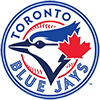 Alejandro Kirk, Blue Jays: Kirk's disappointing first half has been the most disappointing on this list for me personally, as he's tied with Christopher Morel for my most-rostered hitter this season. I saw a player who walked more than he struck out while producing a 45.0 percent hard-hit rate as a 23-year-old last season and figured we were in for another year in which Kirk would be a strong bat at any position, let alone catcher. Instead, we've gotten a .253/.337/.337 line and just three home runs, alongside a corresponding reduction in playing time. Kirk was the designated hitter in over half the games in which he wasn't starting at catcher last season, a number which has dropped to 18.6 percent this year. If you're looking for a silver lining, his elite plate discipline has only taken a small step back, as his 11.4 percent strikeout rate and 9.9 percent walk rate is still an excellent combination. But all that contact isn't worth much when combined with a 33.3 percent hard-hit rate and a 2.5 degree average launch angle, second-lowest among players with at least 202 plate appearances. A low strikeout rate keeps his batting average from bottoming out, but he's hit far too many weak grounders.
Alejandro Kirk, Blue Jays: Kirk's disappointing first half has been the most disappointing on this list for me personally, as he's tied with Christopher Morel for my most-rostered hitter this season. I saw a player who walked more than he struck out while producing a 45.0 percent hard-hit rate as a 23-year-old last season and figured we were in for another year in which Kirk would be a strong bat at any position, let alone catcher. Instead, we've gotten a .253/.337/.337 line and just three home runs, alongside a corresponding reduction in playing time. Kirk was the designated hitter in over half the games in which he wasn't starting at catcher last season, a number which has dropped to 18.6 percent this year. If you're looking for a silver lining, his elite plate discipline has only taken a small step back, as his 11.4 percent strikeout rate and 9.9 percent walk rate is still an excellent combination. But all that contact isn't worth much when combined with a 33.3 percent hard-hit rate and a 2.5 degree average launch angle, second-lowest among players with at least 202 plate appearances. A low strikeout rate keeps his batting average from bottoming out, but he's hit far too many weak grounders.
Corner Infielders
| Player | Team | Pos | ADP Rank | Earned Value Rank | Spots Dropped |
|---|---|---|---|---|---|
| Jose Miranda | MIN | 1B/3B | 149 | 665 | 516 |
| Jean Segura | MIA | 2B/3B | 238 | 705 | 467 |
| Wil Myers | FA | 1B/OF | 229 | 685 | 456 |
| Seth Brown | OAK | 1B/OF | 210 | 586 | 376 |
| Matt Mervis | CHC | 1B | 432 | 775 | 343 |
Wil Myers, Free Agent: Myers' appeal in March made sense: he was at worst a decent hitter, having posted a wRC+ between 97 and 115 in each of the last seven seasons, and he was moving to a team with plenty of playing time available in an excellent hitters' park. The result? A .189/.257/.283 line, three homers, two steals and a DFA before the end of June. Myers struggled significantly when healthy, striking out 34.0 percent of the time and posting a 29.6 percent hard hit rate. Among the 302 hitters with at least as many plate appearances as Myers (141), those marks rank 293rd and 273rd, respectively. He then hit the injured list with a shoulder sprain in late April and was released once he got healthy rather than being activated, with the Reds' new additions leaving no more room on the roster. His .185/.241/.296 line in rehab games didn't help his case, nor does it help his odds of landing in a regular role elsewhere.
Middle Infielders
| Player | Team | Pos | ADP Rank | Earned Value Rank | Spots Dropped |
|---|---|---|---|---|---|
| Vaughn Grissom | ATL | 2B/SS | 209 | 798 | 589 |
| Kolten Wong | SEA | 2B | 263 | 834 | 580 |
| Oswald Peraza | NYY | SS | 330 | 872 | 542 |
| Jean Segura | MIA | 2B/3B | 238 | 705 | 467 |
| Tim Anderson | CWS | SS | 77 | 526 | 449 |
 Tim Anderson, White Sox: After four straight seasons in which he finished with a 110 wRC+ or better, Anderson has collapsed to a 50 wRC+ this season, the product of a .232/.270./.272 slash line. His 19.8 percent strikeout rate and 5.1 percent walk rate both beat his overall marks from that four-year stretch, but his aggressive approach isn't bringing the same results this season. The main problem is that his power has completely evaporated. He's never hit more than 20 homers in a season, but the White Sox surely would have expected more than zero up to this point. Unfortunately, there's little reason to believe that the power is coming back any time soon, as nagging shoulder issues have seen him shift from shortstop to second base in recent games. His last barrel came way back on May 13, and his 65.2 percent groundball rate is well above even his elevated 52.9 percent career mark. Grounders and good speed should at least theoretically lead to a rebound in batting average, as his .278 xBA indicates, but the shoulder issue makes it hard to count on that happening and even harder to count on a full return to form.
Tim Anderson, White Sox: After four straight seasons in which he finished with a 110 wRC+ or better, Anderson has collapsed to a 50 wRC+ this season, the product of a .232/.270./.272 slash line. His 19.8 percent strikeout rate and 5.1 percent walk rate both beat his overall marks from that four-year stretch, but his aggressive approach isn't bringing the same results this season. The main problem is that his power has completely evaporated. He's never hit more than 20 homers in a season, but the White Sox surely would have expected more than zero up to this point. Unfortunately, there's little reason to believe that the power is coming back any time soon, as nagging shoulder issues have seen him shift from shortstop to second base in recent games. His last barrel came way back on May 13, and his 65.2 percent groundball rate is well above even his elevated 52.9 percent career mark. Grounders and good speed should at least theoretically lead to a rebound in batting average, as his .278 xBA indicates, but the shoulder issue makes it hard to count on that happening and even harder to count on a full return to form.
Outfielders
| Player | Team | Pos | ADP Rank | Earned Value Rank | Spots Dropped |
|---|---|---|---|---|---|
| Oscar Gonzalez | CLE | OF | 215 | 901 | 686 |
| Oscar Colas | CWS | OF | 253 | 760 | 507 |
| Juan Yepez | STL | OF | 392 | 867 | 475 |
| Jesse Winker | MIL | OF | 241 | 701 | 460 |
| Wil Myers | FA | 1B/OF | 229 | 685 | 456 |
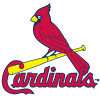 Juan Yepez: It's by no means the most significant thing to have gone wrong for St. Louis this season, but Yepez's disappearance certainly hasn't helped the last-place club. Yepez was drafted as a reserve-round pick in 15-team leagues, with the promising 109 wRC+ he showed as a rookie being offset by the Cardinals' crowded depth chart. Those playing-time concerns turned out to be significant, as Yepez wound up losing an Opening Day roster spot to Alec Burleson. Still, the Cardinals have seen Tyler O'Neill, Lars Nootbaar and Dylan Carlson all miss time with injuries this season, while Jordan Walker spent time in the minors after a disappointing start. There have been plenty of opportunities for Yepez to stake his claim for regular at-bats, and if he hit like he did as a rookie, he would have earned them by now. Instead, he hit just .214/.283/.381 in 46 trips to the plate at the MLB level, with his strikeout rate jumping from 22.3 percent to 28.3 percent. He hasn't looked good in the minors, either, with his .233/.313/.417 line good for just an 81 wRC+. He's been at Triple-A Memphis for most of this month, and it doesn't look like that will be changing soon.
Juan Yepez: It's by no means the most significant thing to have gone wrong for St. Louis this season, but Yepez's disappearance certainly hasn't helped the last-place club. Yepez was drafted as a reserve-round pick in 15-team leagues, with the promising 109 wRC+ he showed as a rookie being offset by the Cardinals' crowded depth chart. Those playing-time concerns turned out to be significant, as Yepez wound up losing an Opening Day roster spot to Alec Burleson. Still, the Cardinals have seen Tyler O'Neill, Lars Nootbaar and Dylan Carlson all miss time with injuries this season, while Jordan Walker spent time in the minors after a disappointing start. There have been plenty of opportunities for Yepez to stake his claim for regular at-bats, and if he hit like he did as a rookie, he would have earned them by now. Instead, he hit just .214/.283/.381 in 46 trips to the plate at the MLB level, with his strikeout rate jumping from 22.3 percent to 28.3 percent. He hasn't looked good in the minors, either, with his .233/.313/.417 line good for just an 81 wRC+. He's been at Triple-A Memphis for most of this month, and it doesn't look like that will be changing soon.








